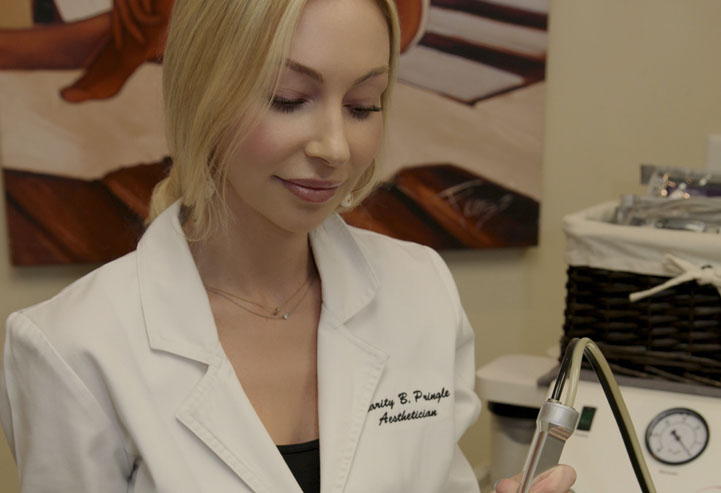Fitzpatrick Skin Type Scale – Bang-on or Bunk-off? Understanding Your Skin Cancer Risk

Skin cancer is a concern everyone should share, regardless of skin type, texture, or tone. However, certain skin types might be especially susceptible to skin cancer development, and it would be helpful to assess risk on an individual basis. The Fitzpatrick skin typing test is a scale most dermatologists at least reference when determining a patient’s skin cancer risk. But is it accurate, and should we use it ourselves?
In honor of St. Patrick’s Day, we’ll take a closer look at the dermatological tool with a name from the Emerald Isle.
What Is the Fitzpatrick Skin Type Scale?
The Fitzpatrick phototype test is a system developed by Dr. Thomas Fitzpatrick in the early 1970s to measure a patient’s sensitivity to ultraviolet light treatment for skin conditions like psoriasis and eczema. Since its development, it has been used to predict a person’s vulnerability to skin cancer based on skin pigmentation and eye color.
According to the scale, the likelihood of developing skin cancer decreases as skin tone deepens. So, a person with extremely fair skin that is incapable of tanning is at the highest risk for skin cancer, while a person with extremely deep skin tones is at the lowest risk.
The system also involves taking a quiz that is meant to determine photosensitivity by reporting your skin’s response to sun exposure. The resulting score – from zero to over 40, depending upon the number of questions — predicts your skin cancer risk. The lower your score, the higher your risk, according to the scale.
There are six skin tones depicted on the Fitzpatrick scale:
- Type 1 (0-6 score): This is the palest category of skin tones. This type never tans, only burns. Blue eyes; blonde or red hair.
- Type 2 (7-13 score): This is also a pale skin tone, but it is capable of tanning lightly, though it will burn easily. Blue, green, or hazel eyes; light brown, blonde, or red hair.
- Type 3 (14-20 score): Fair skin tone that mainly tans and sometimes burns. Any eye or hair color can be a type 3.
- Type 4 (21-27 score): Naturally olive skin tone that tans easily and deeply and only burns after heavy direct sun exposure. Hair is brown or black; eyes are brown.
- Type 5 (28-34 score): Brown skin tone that never burns and tans very easily. Hair is brown or black; eyes are dark brown.
- Type 6 (35+ score): Deepest brown-to-black skin tone. Hair is black; eyes black or dark brown.
(Fun fact – emojis featuring different skin tones were modeled after the pictorial skin tone representations in the Fitzpatrick scale!)
How Accurate Is the Fitzpatrick Skin Type Scale?
The Fitzpatrick skin test was developed by a dermatologist to be used by dermatologists. People undergoing laser treatments for skin disorders or cosmetic purposes must be assessed for UV sensitivity so that the treatment can be administered safely and effectively. However, anyone can take a Fitzpatrick skin test online and draw accurate or less-than-accurate conclusions.
For people with paler skin tones – type 3 or higher – the Fitzpatrick scale can be a good indicator of photosensitivity and skin cancer risk, but mainly because it is simply better to err on the side of caution when it comes to skin cancer protection. If you have pale skin, the Fitzpatrick test results will likely encourage you to be proactive about skin checks and sunscreen.
However, the results are a bit more complex for people with darker skin tones. While the scale accounts for multiple eye and hair colors for people with type 3 skin, the test presupposes blue/green eyes for palest skin and brown hair and eyes for anyone with deeper skin tones, which can complicate self-reporting. If you have brown eyes and extremely pale skin, what is your risk?
Additionally, not everyone with dark skin recognizes sunburn or sunburn potential because redness and color changes might not be noticeable. This deficiency in the test can have serious medical consequences for people with darker skin, many of whom erroneously believe that they are naturally not at risk for skin cancer.
While contemporary research is increasingly concerned about the limitations of the Fitzpatrick scale for skin cancer risk self-assessment, there are clinical applications where the scale might not be ideal.
A survey conducted in 2019 by researchers from the Howard University College of Medicine found that 31% of 140 practicing board-certified dermatologists and dermatology trainees used the Fitzpatrick test as a medium to describe their patients’ ethnicity or race, not just skin tone. While there are broad interrelationships between skin color and race or ethnicity, nuances can easily be ignored, leading to suboptimal clinical outcomes.
How Can I Learn My Risk for Skin Cancer?
While the Fitzpatrick skin test might not be entirely adequate to determine everyone’s skin cancer risk, it is still worth taking if you have concerns about your skin health. However, you should follow up on your self-assessment by scheduling an appointment with a board-certified dermatologist.
Regardless of your skin tone, race, ethnicity, history of sunburns, or age, the best way to learn your risk for skin cancer is to have a dermatologist perform a skin check. This procedure will immediately alert you to any abnormalities so that you can address them early, when the chances of complete recovery are highest.
To find a dermatologist near you, please visit our information page today!





